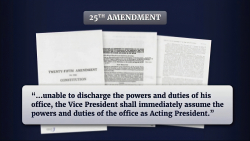The Bofors 40mm anti-aircraft gun was essential for naval and coastal air defense throughout World War II.
The Second World War was known for its iconic, advanced (for its era) weapons. Hitler’s Germany was particularly notorious for its technical skill. The Allies, too, had their own set of equipment that made a difference, notably toward the end of the war (not least among them the atomic bomb).
One weapon system that was instrumental throughout the war was the Bofors 40mm anti-aircraft gun. Indeed, this system was so popular and effective that the navies of both the Allied and Axis powers used this Swedish-made weapon on their ships.
Designed to bridge the gap between small-caliber machine guns and larger anti-aircraft artillery, the Bofors 40mm anti-aircraft gun provided rapid, accurate fire against low-flying aircraft, making it indispensable for naval defense. Throughout the war, it equipped warships on both sides and in all theaters of the global conflict. This gun proved most effective in countering kamikaze attacks, dive bombers, and torpedo planes.
Where the Bofors Came From
The origins of the Bofors 40mm gun trace back to 1928, when the Swedish Navy sought a replacement for the outdated Vickers 40mm “pom-pom” guns. Initial prototypes were tested in 1929, but issues with the feeding mechanism delayed progress until a redesigned system—featuring automatic ejection of spent casings and clip-fed reloading—was perfected by 1931.
The production model, designated the 40mm akan M/32 (or, more commonly, the Bofors 40mm L/60, despite its barrel length being 56.25 calibers), fired a 900-gram high-explosive shell at 2,960 feet per second from a 40 by 311 rimmed cartridge.
A Bofors 40mm gun achieved a cyclic rate of 120-160 rounds per minute, though practical rates were 80-100 due to manual loading, with an effective ceiling of about 12,467 feet. The gun incorporated advanced features, such as reflector sights and a mechanical predictor for lead adjustment, powered by a six-volt battery, which enhanced its accuracy against fast-moving targets.
Technically, the gun weighed between 1,036 and 1,163 pounds (depending on the variant). Speaking of variants, there were two different classes of the Bofors 40mm gun. It was available in either air-cooled or water-cooled form.
Recoil was a nominal 7.9 inches, requiring at least 7.2 inches for automatic operation, and a barrel life extended to between 9,600 and 10,000 rounds. Ammunition included high-explosive tracer shells, and mounts varied from single, twin, to quadruple configurations—often power-operated for naval use.
Its recoil-operated, mono-bloc barrel design ensured reliability, making it adaptable for ships where vibration and saltwater corrosion were concerns. By 1939, export success had led to licensed production in countries like Poland, Finland, and Norway, setting the stage for its wartime proliferation.
Who Used the Bofors?
The Allies, notably the United States and United Kingdom, rapidly integrated the Bofors into their naval arsenals as air power came to dominate sea battles. The British Army first tested Polish-built examples in 1937, designating them QF 40 mm Mark I. By 1943, they had been adapted with the Kerrison Director for precise aiming and the Stiffkey Sight for lead correction.
The Royal Navy employed twin-mount Mark IV and single-mount Mark V versions on nearly all major warships, producing over 19,000 guns by war’s end, with Canadian factories contributing significantly to production.
British barges fitted with Bofors provided coastal defense, and the gun saw action in protecting convoys from German Luftwaffe attacks in both the Atlantic and Mediterranean areas of the European Theater.
Meanwhile, the US Navy recognized the gun’s superiority after the Empire of Japan’s dastardly surprise attack on Pearl Harbor exposed the weaknesses of the US 1.1-inch and .50-caliber defenses.
By 1943, three years after the Americans covertly acquired a sample of the Bofors 40mm gun from Finland, Chrysler had produced 60,000 guns. The Bofors 40mm guns replaced inferior weapons on nearly all US warships, from destroyers to battleships, such as the legendary Iowa-class battleship (famously equipped with 80 guns) and even Essex-class carriers (typically sporting 72 guns).
The Americans favored the water-cooled, power-operated quad mounts for high-volume fire, proving devastating against Japanese kamikazes in the Pacific Theater of the war.
Between October 1944 and February 1945, the 40mm Bofors accounted for half of all aircraft downed by Navy surface warships, underscoring its effectiveness in close-range engagements. Other Allies, like Canada and Australia, produced or used variants, ensuring the gun’s presence on Allied fleets worldwide—and the interoperability among the Allied navies.
The Axis Loved the Bofors, Too
Even though the Bofors 40mm anti-aircraft gun was a prominent feature for the Allied navies, the Bofors was also fielded by the Axis Powers—often via capture or pre-war purchases. Germany, designating it the Four cm Flak 28, captured hundreds from British and Dutch forces in 1940 and purchased some Hungarian-made versions.
It armed German cruisers, like the Admiral Hipper and Prinz Eugen, as well as schnellboote (fast attack boats in the German Kriegsmarine fleet), providing anti-aircraft cover in the Baltic and North Seas.
After conquering the Dutch East Indies in 1942, Japan seized some Bofors guns and reverse-engineered them as the Type 5, although it never entered full service. Captured examples from Singapore bolstered Japanese naval defenses in the Pacific, albeit in limited numbers.
Hungary, an Axis ally, produced licensed versions sold to Germany, while other minor Axis navies occasionally used captured stocks. This cross-adoption highlighted the gun’s universal appeal, as Axis ships faced similar aerial threats from Allied bombers and fighters.
Why the Bofors 40mm Was Successful
In naval contexts, the Bofors excelled due to its high rate of fire, proximity-fused ammunition compatibility (introduced later in the war), and versatility in mounts. Allied navies used it to create dense flak barriers during carrier operations and amphibious landings, while Axis vessels relied on it for point defense against overwhelming air superiority.
Its limitations, such as manual loading pauses and vulnerability to sustained fire, were mitigated by multiple mounts and crew training. After the war, the L/60 variant saw continued use in conflicts such as the Falklands War and the Yugoslav Wars, before being phased out in favor of more advanced systems, including the L/70 or missiles.
Ultimately, the Bofors’ legacy lies in its role as an equalizer in the skies above the seas, proving that superior technology can bridge even the deepest tactical gaps in the conflict.
About the Author: Brandon J. Weichert
Brandon J. Weichert, a Senior National Security Editor at The National Interest as well as a contributor at Popular Mechanics, consults regularly with various government institutions and private organizations on geopolitical issues. Weichert’s writings have appeared in multiple publications, including The Washington Times, National Review, The American Spectator, MSN, The Asia Times, and countless others. His books include Winning Space: How America Remains a Superpower, Biohacked: China’s Race to Control Life, and The Shadow War: Iran’s Quest for Supremacy. His latest book, A Disaster of Our Own Making: How the West Lost Ukraine, is available for purchase wherever books are sold. He can be followed on Twitter @WeTheBrandon.
Image: Adolfo Martinez Soler / Shutterstock.com.

















